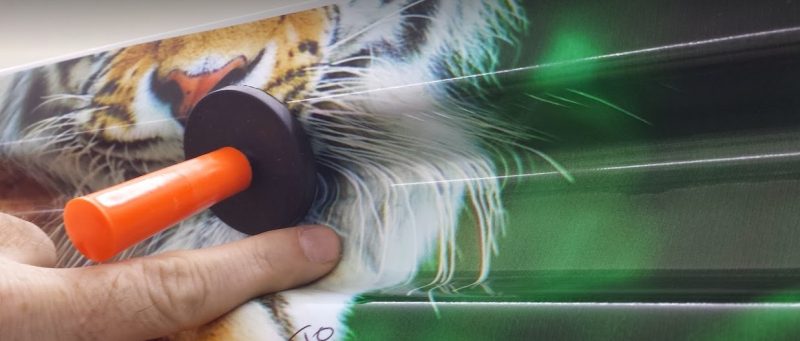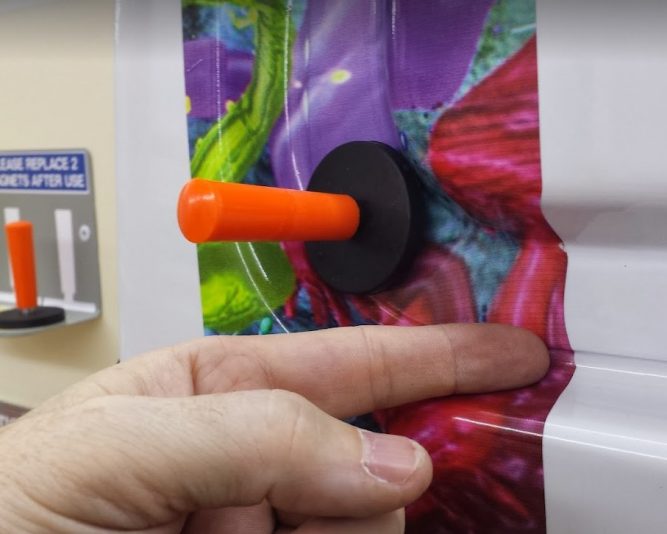Activity Feed › Forums › Sign Making Discussions › Vehicle Wrapping › UV printed vinyl and laminate for wrapping
-
UV printed vinyl and laminate for wrapping
Posted by Adam McMonagle on January 26, 2023 at 4:31 pmHi, anyone here print vehicle wraps with a UV printer (Mimaki)?
Im looking for recommendations for material that laminates and cuts well (as well as the final application)
Cheers
RobertLambie replied 1 year, 6 months ago 3 Members · 3 Replies -
3 Replies
-
Hi Adam,
Unless the Mimaki uv ink set has changed i understand that it’s not the best choice for vehicle wrapping. I think I’m correct in saying that UV in doesn’t stretch like Eco Solvent and latex. Also uv ink is not as smooth as eco solvent / latex therefor needing a laminate that has a slightly higher build up of adhesive to ensure a good ink key. I’m not aware of a cast laminate with this feature. I’ll watch this post with interest and good luck, if you want a great deal on a latex let me know
Graham
-
Cheers Graham
I have heard a lot of people do this with the LUS170 inks without a problem, I get your point as its better if it is on solvent/latex. I’m just curious what material/manufacturer people are using with UV cast for wrapping. Lets see if anyone else does it 👍
-
-
For the record, the following is NOT speaking about the Mimaki printer or its Ink in question, because I have no hands-on knowledge of the machine or ink type to give any proper educated response.
The following is a generalised view of UV ink and the best way I can simplify the difference between the likes of UV and Solvent Ink, in a non-technical way,
- Solvent ink chemicals bite into the surface of the vinyl.
- UV-cured inks dry like a crust on the top of the vinyl.
There are many Pros and Cons of both inks for different types of applications, but these two I am pointing out because they are relevant to wrapping.
The way I explain what is happening to UV ink when wrapping is when the soft vinyl is expanding and contracting during the application beneath the ink coverage. It is a bit “like a snake shedding its skin”.
The vinyl is constantly moving below the dry ink. At the same time, the laminate is covering the ink, so both the base vinyl and laminate are moving and stretched into a deep recess.
You now have the base vinyl sticking to the paintwork, however, the laminate is sticking to the ink and can only pull back the dry ink. this build-up of tension from the laminate, can, over time pull the ink away from the base vinyl causing a delamination failure. Or, lose its grip on the micro-textured ink surface.That said, “some” U.V. inks have come a long way and there are some much smoother and much more stretchable options.
I think the first ink tests I did on vinyl goes back over 25 years. Back then it was wax resin, then thermal inks, then solvent, latex and UV.
All were done independently by me and most were for my own research, but I have also been commissioned by some ink and vinyl companies over the years to do the same with their products to give them performance feedback.Have a look at the following photos from a UV ink test that I did. These ARE u.v. inks, printed and laminated and stretched into the most demanding van recess I know of.
From memory, this test period for these was over 4 weeks and there was no sign of failure. However, I think these inks were a more expensive type of ink and are typically used for the likes of vacuum-forming flatbed printed clear acrylic sheets. I cannot share the ink type or machine these came from, but I can tell you it wasn’t the one we are speaking of.What I was very surprised with was that even at the deepest points of the recess, the inks had lost little to no colour. Something which is very common with most other ink types.
Log in to reply.



